OALP XIX Seminar 11
Categories: Uncategorized
Wednesday,
November 13, 2019
OALP
Class XIX enjoyed a great three-day seminar in northeastern Oklahoma!
We
began at the Port of Catoosa, learning about their facility, the businesses
located at the port, their association with industry in Oklahoma, including
production agriculture and how they utilize the port, and the larger McClellan-Kerr
Navigation System. We also learned about the history of the navigation system
in eastern Oklahoma and the impact that it has on our entire state.
We
then headed to Newt Graham Lock and Dam 18 where Brad, Josh and Luis talked
more about the lock and dams throughout the McClellan-Kerr Navigation System
and how they interact with one another. It was a brisk morning, but we were
able to tour the lock and dam, the tunnels underneath, and even see the gates
in operation!
From
there, we went to the Miller Amish Farm for a fantastic lunch where most ate
more than we could handle! Ginger Reimer spoke with us about the soybean checkoff
program and Patrick Zeka and Beau Sheffield from Oklahoma AgCredit spoke about
their company and the important partnership between producers and financing.
We
drove to Pryor to tour the MidAmerica Industrial Park, learning more about the
businesses that call the park home (including the secretive Google facility),
the impact the park has had on the surrounding communities, and their future
plans!
Next
on the agenda was the Pensacola Dam in Langley. Construction of the dam was
finished in 1940. It is Oklahoma’s first hydroelectric power plant and one of
the longest multiple arch dams in the world. We were able to tour inside the
power plant and see the operation first hand, including the original art deco
design and décor!
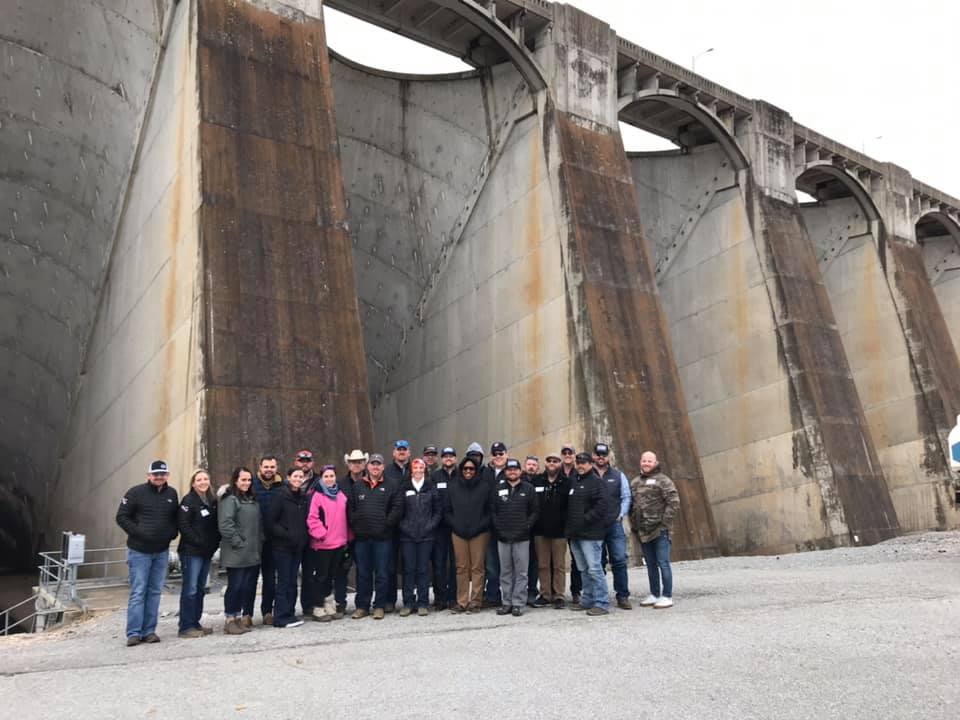
After
leaving the dam, we headed north to Afton to meet with Scott Johnson and learn
about his soybean operation. We were able to watch his team of combines in full
harvest mode!
We
wrapped up the first day of this seminar at the Boys and Girls Club of Ottawa
County. We heard presentations from Jay Franklin (State Board of Agriculture)
and Jim Shelton (AFR/Holistic Management International), and watched a video
titled, “Farmer’s Footprint” where we learned about their different takes on
production agriculture. It was a good reminder that even within the production
agriculture community, we are going to sometimes have different opinions.
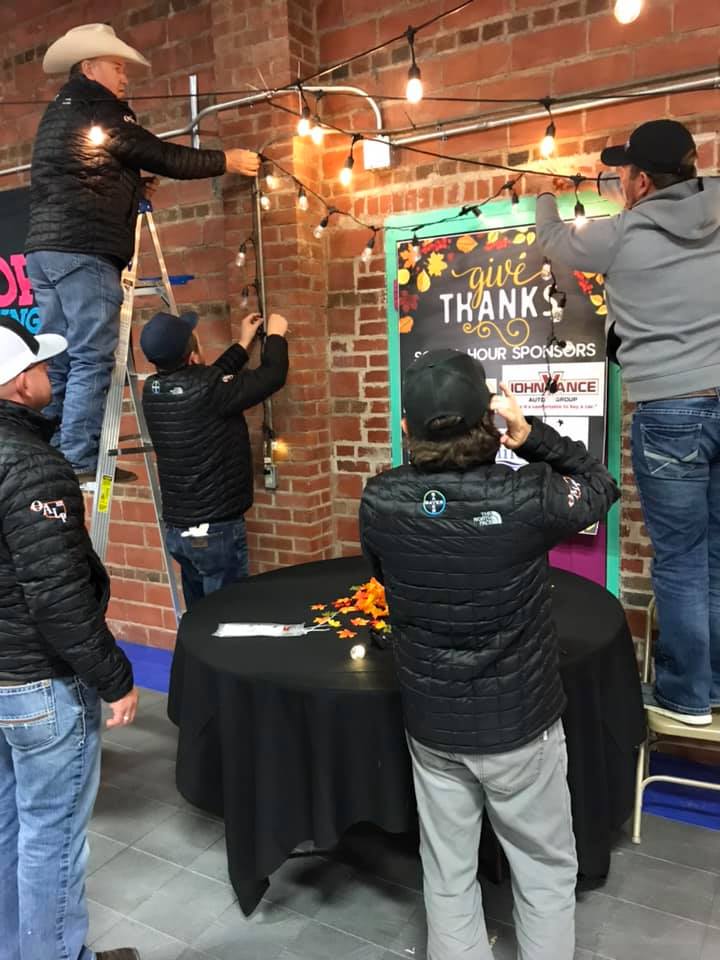
We
were treated to a delicious dinner catered by the Vinita FFA Chapter which
spends a lot of time catering events across the state. To end the night, we
helped the Boys and Girls Club set up for their annual Kidsgiving Dinner
Auction that was held the next night!
Thursday,
November 14, 2019
We
started Thursday morning with a trip to J-M Farms. They had coffee and
doughnuts waiting for us when we arrived and gave us a brief rundown of what we
would see on the tour. We split up and toured the facility. We were able to see every aspect of mushroom
growing from compost to packaged product. They produce 28 million pounds of
mushrooms annually. Mainly button mushrooms are produced here. Wheat straw,
chicken litter, cotton seed meal, gypsum and urea are utilized for the compost
material. They are truly innovative in
their equipment – if they do not have it, they make it. This was an amazing
stop and one that we will not forget soon.
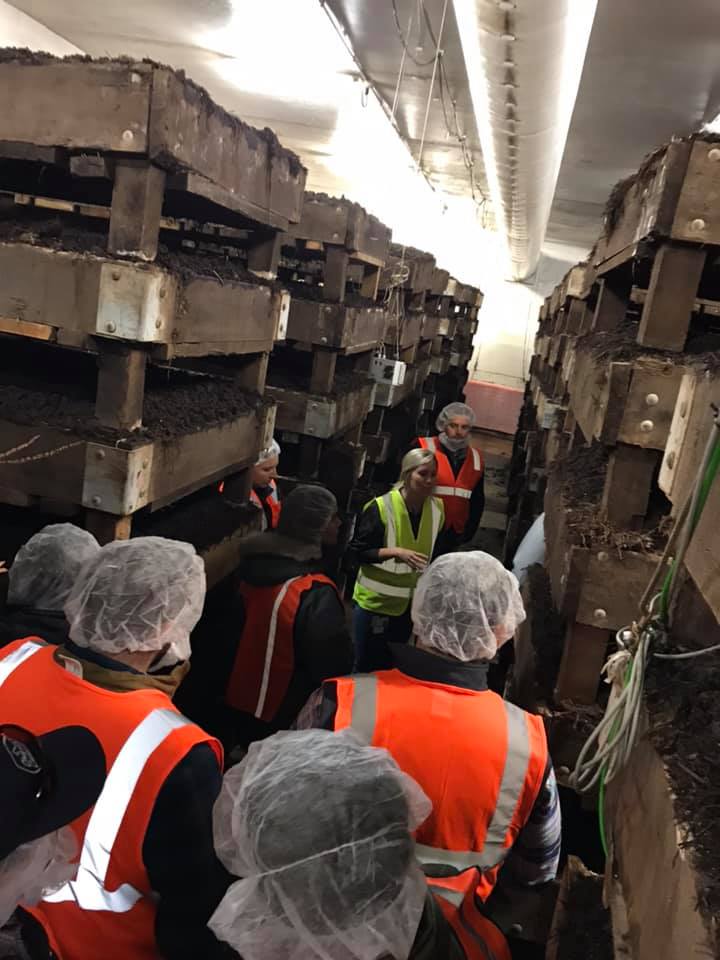
We proceeded to Adair to visit the
farm of Clay and Melissa Hibbard, contract growers for Tyson. Their product is
eggs. These eggs will be taken to a hatchery, hatched, then the chicks grown
for meat. From this facility they produce nearly 20,000 eggs per day during
peak times. Pullets arrive at 22 weeks old, weighing around four pounds. Each
hen lays about 160 eggs in their lifetime. They started in 2006 and plan to
continue for as long as they can. They strive to provide food, water, shelter,
and a low stress environment for the hens. Tyson provides the chickens, the
feed, and tech support. It is up to Clay and Melissa to provide the rest.
Hibbard Farms is a very welcoming farm that welcomed us and anyone else to
their farm.
We then
traveled to Park Hill to visit with Greenleaf Nursery. They are a wholesale greenhouse
that has 640 acres in one location – 540 acres under hoop houses. They have three
other sites around the U.S. that focus on plants for their region. At the Park
Hill site, they have 1100 species of plants growing; the whole company grows
around 2300 species. During peak summer heat, they pump 1.2 million gallons of
water every day out of Ten Killer Lake. After having a driving tour of their facility,
we headed farther south.
Arriving
near Webbers Falls, we were shuttled into 360 Farms and visited with Brent and
Valerie Madding. They are a retired couple who took an interest in elderberries.
They are now considered the nation’s largest producer of elderberries. The also
propagate elderberry plants for sale. They currently produce 1024 plants every
30 days in a hydroponic water filtration greenhouse. They also utilize live
fish as a source of nutrients for the plants.
The market continues to grow in demand for the product and 360 Farms is
a highly regarded source for this crop. After a tour of the greenhouses and
processing area, we made our way back to the bus and headed for dinner.
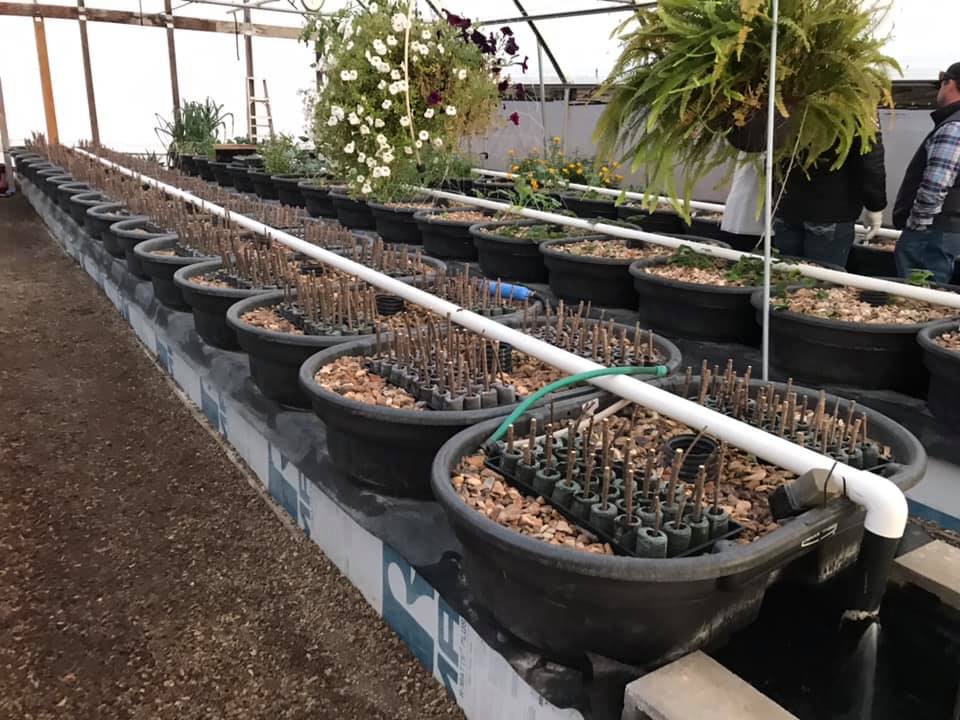
We wrapped up the day full of
travels with dinner at June’s in Checotah, consisting of popcorn chicken,
mashed potatoes, gravy, and a delicious assortment of pies.
Friday, November 15, 2019
Our day
started bright and early at Swan Dairy at 7:15 a.m. where we were greeted by
Diane Swan Williamson who gave us the history. Swan dairy is a third generation
dairy and the town of Claremore has built up around them. They have adapted
well and are able to sell their product locally including milk, and cheese (made
three times a week on site) and sell through a store front on site. Also,
people come and watch the cows being milked and it provides an agricultural
tourism venue while promoting the products they produce. They are a great
family and have an interesting story.
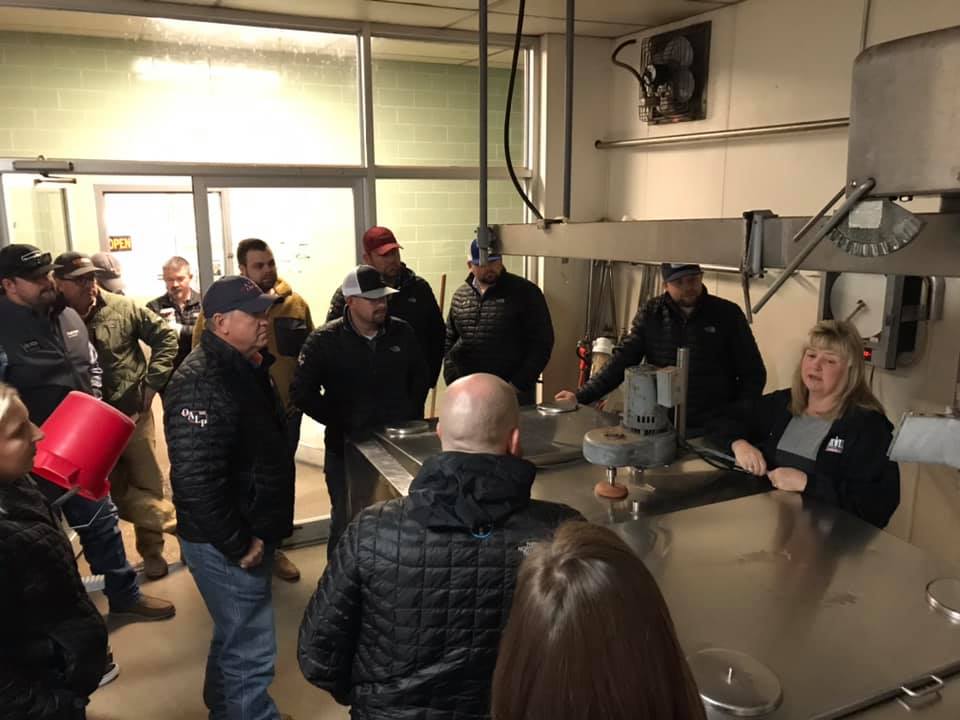
We
ventured next door down the hill to Nabatak Outdoors and Manager Kara Rowe gave
us a tour and history of the retail and wholesale sides of their fishing tackle
and equipment and bait business. While she indicated the tackle sales were good,
the bait business is their “bread and butter” and is a seven day a week job. They
also have a store in Paragould, Arkansas.
From there
we ventured to Green Eyes Coffee and Café where we enjoyed a beverage and RCB
Bank gave us a brief insight into the current banking industry
We then
visited Selman Farms where Chad Selman gave us an in-depth look at the pecan
farming industry. We had a harvesting demonstration plus a tour of their cold
storage and bagging and shipping barns. It is a very labor-intensive business
and the family does a great job promoting Oklahoma agriculture and their
industry.
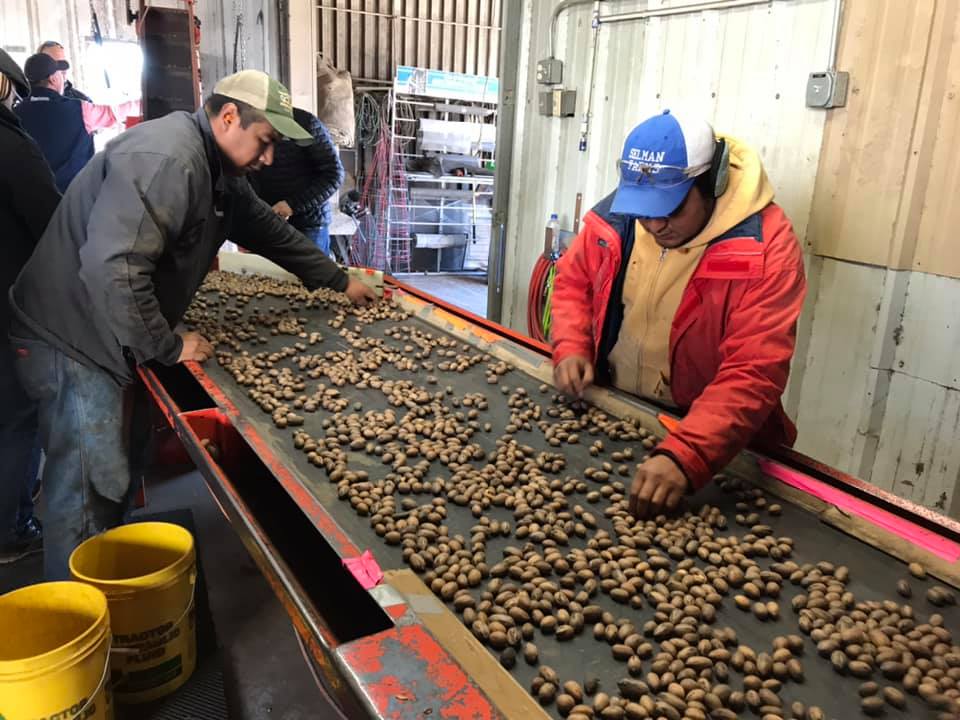
Our final visit was to Owasso Christmas Tree and Berry Farm where Bill Jacobs gave us a nice presentation on Christmas trees from raising them to the final product when they leave to become a family Christmas tree. Also, part of their operation includes blackberries – self-pick and selling on a seasonal basis. Other income derived from their operation included photo permits, blueberries, wreathes, and other Christmas items. Mr. Jacobs said their main advertising is social media. Overall, it was a very good tour. We had reflections at the Tree Farm and then departed for the day.
We thoroughly enjoyed traveling through northeastern Oklahoma. Next seminar will be in Stillwater, Oklahoma as we prepare for our international trip.
Best,
Courtney P. Brown, Class XIX